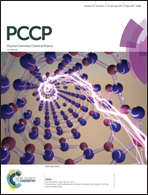A hybrid method using the widely-used WIEN2k and VASP codes to calculate the complete set of XAS/EELS edges in a hundred-atoms system
Abstract
Most of the recent developments in EELS modelling has been focused on getting a better agreement with measurements. Less work however has been dedicated to bringing EELS calculations to larger structures that can more realistically describe actual systems. The purpose of this paper is to present a hybrid approach well adapted to calculating the whole set of localised EELS core-loss edges (at the XAS level of theory) on larger systems using only standard tools, namely the WIEN2k and VASP codes. We illustrate the usefulness of this method by applying it to a set of amorphous silicon structures in order to explain the flattening of the silicon L2,3 EELS edge peak at the onset. We show that the peak flattening is actually caused by the collective contribution of each of the atoms to the average spectrum, as opposed to a flattening occurring on each individual spectrum. This method allowed us to reduce the execution time by a factor of 3 compared to a usual—carefully optimised—WIEN2k calculation. It provided even greater speed-ups on more complex systems (interfaces, ∼300 atoms) that will be presented in a future paper. This method is suited to calculate all the localized edges of all the atoms of a structure in a single calculation for light atoms as long as the core-hole effects can be neglected.



 Please wait while we load your content...
Please wait while we load your content...